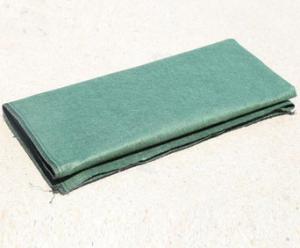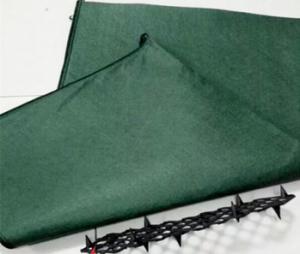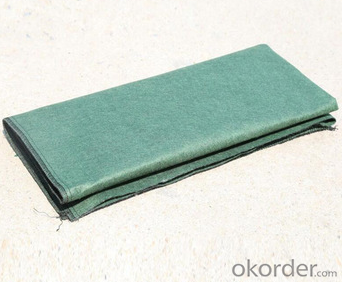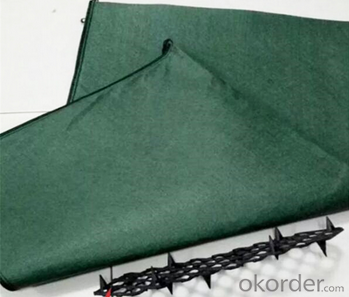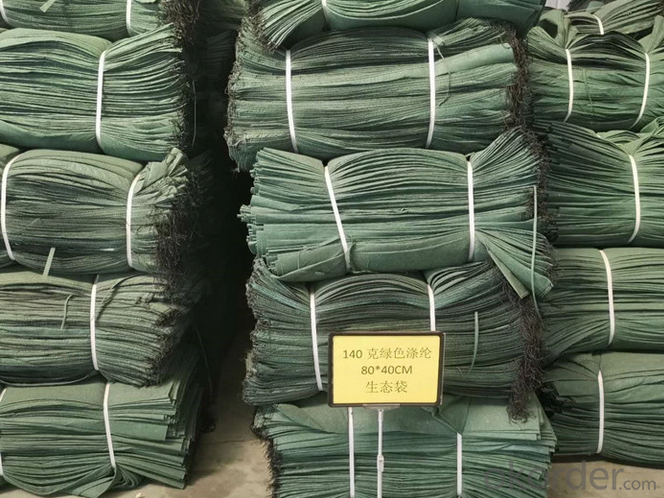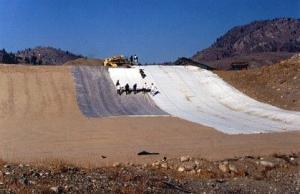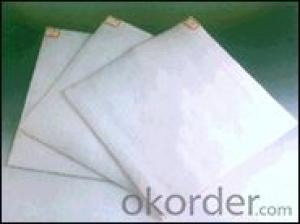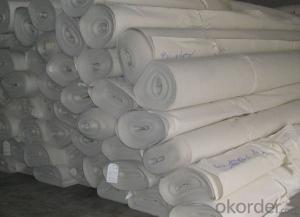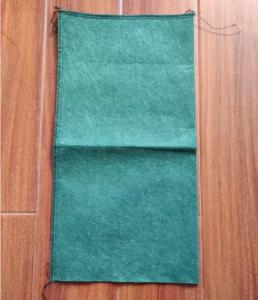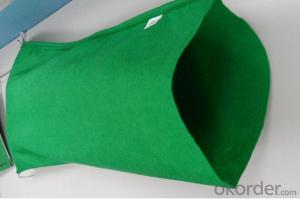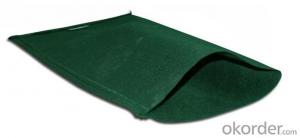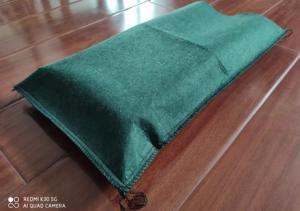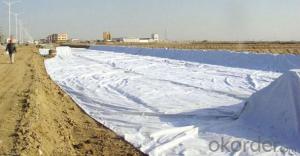PP Geotextile Bags for River Sand Protection
- Loading Port:
- Qingdao
- Payment Terms:
- TT or LC
- Min Order Qty:
- 3000 pc
- Supply Capability:
- 300000 pc/month
OKorder Service Pledge
OKorder Financial Service
You Might Also Like
1, Brief Introduction of PP Geo Textile Bag
Made from PET(polyester) or PP(polypropylene) by nonwoven needle punched manufacturing, it has isolation, filtration, drainage,
reinforcement, protection and maintenance etc. fuction.
2, Specification
Product Name | PET geo bag geotextile |
Material | Polyester or Customized. |
Technics | Customized. |
Thickness | Customized. |
Width | Within 3.2m or Customized. |
Color | All colors are available(Customized). |
Length | Customized. |
Weight | 50gms~2000gsm or Customized. |
Packaging | In roll packing with plastic bag outside or customized |
Payment | L/C,D/A,D/P,T/T,Western Union,MoneyGram.. |
Delivery time | 5-20 days after receiving buyer's repayment. |
Price | Reasonable price with high quality. |
Capacity | 3Tons per 20ft container; |
8Tons per 40HQ container. | |
Usage: | Such as electric blanket,bedding, car interior, bags, mask, hats, Clothes, shoecover, apron,cloth, packaging material, furniture, Mattresses, toys, clothing, filter fabric, filling materials, agriculture, Home textile,garment, industry, interlining and other industries. |
3. Features: (1) High strength, low deformation Geobag
(2) Durability: steady property, not easy to resolved, air slaked and can keep the original property long term
(3) Anti-erosion: anti-acid, anti-alkali, resists insects and mould Geobag
(4) Permeability: could control the sieve size to retain certain permeability Geobag sand bag
4, Application
(1). Water conservancy project and hydropower project.
(5) Environment protection; 5. Pictures
(2). Road paving , railway.
(3). Airport and port.
(4). River bank protection and tunnel.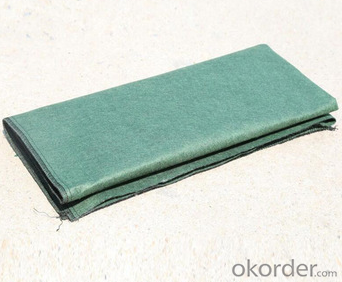
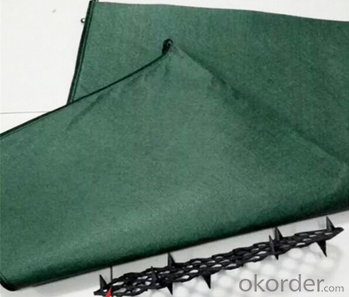
6. Package of PP Geo Textile Bag
Stardard export package or as per your request
7.FAQ
We have organized several common questions for our clients,may help you sincerely:
1>How about your company?
A manufacturer & supplier focuses on the production of geo textile and geo bag etc. We have exported this product to Amereica, Europe and South East Asia. Customized product is also available based on your detailed requirements.
2> What's the MOQ ?
We kindly recommend 1x40'HQ as the price would be economical based on large loading quantity.
3>How long can we receive the product after purchase?
It takes about 1 to 2 weeks to finish the production based on the specific production schedual. Then it will depend on the shipping time from loading port to the destination port.
- Q: What is the role of geosynthetics in the highway?
- Geosynthetics a lot of geogrid, geotextile which is specific
- Q: Can geotextiles be used for reinforcement of slope toe protection systems?
- Yes, geotextiles can be used for reinforcement of slope toe protection systems. Geotextiles are often utilized in slope stabilization projects to provide reinforcement and prevent erosion at the base of slopes. They can effectively enhance the stability of slope toe protection systems by distributing loads, improving drainage, and reducing the risk of soil erosion.
- Q: What are the factors to consider when selecting a geotextile for a specific application?
- When selecting a geotextile for a specific application, there are several factors to consider. These include the project requirements such as the type of soil, expected loads, and environmental conditions. The geotextile's physical properties, such as strength, permeability, and durability, should align with the project's needs. Additionally, factors like installation methods, cost, and availability should also be taken into account to ensure the most suitable geotextile is chosen for the specific application.
- Q: How do geotextiles help in preventing shoreline erosion?
- Geotextiles help in preventing shoreline erosion by acting as a barrier against soil erosion caused by water movement. They are placed along the shoreline to stabilize the soil, reduce wave energy, and prevent sediment from being washed away. The geotextiles trap sediment and allow water to pass through, which helps to build up and maintain the beach or shoreline, ultimately protecting it from erosion.
- Q: Can geotextiles be used for erosion control in golf courses?
- Yes, geotextiles can be used for erosion control in golf courses. Geotextiles are commonly used to stabilize soil and prevent erosion by providing a barrier against water flow and promoting vegetation growth. This can be particularly beneficial in golf courses where erosion can occur due to heavy rainfall, slope instability, or foot traffic. By installing geotextiles in strategic areas, such as on steep slopes or around water bodies, golf courses can effectively control erosion and maintain the integrity of their grounds.
- Q: How do geotextiles help with soil reinforcement in mechanically stabilized earth walls?
- Geotextiles help with soil reinforcement in mechanically stabilized earth walls by providing a strong and stable base for the soil. They distribute the load evenly, reducing the risk of soil erosion and increasing the wall's stability. Additionally, geotextiles improve the soil's drainage capabilities, preventing water buildup and further enhancing the wall's structural integrity.
- Q: Can geotextiles be used in coastal protection projects?
- Yes, geotextiles can be used in coastal protection projects. Geotextiles are permeable fabrics that can effectively control erosion and stabilize soil in coastal areas. They are commonly used to prevent sediment loss, promote vegetation growth, and provide shoreline protection against wave action. Geotextiles can be installed as a barrier or a filter to retain sediment and prevent erosion, making them a valuable tool in coastal protection projects.
- Q: What are the factors to consider when selecting geotextiles for embankment stabilization?
- When selecting geotextiles for embankment stabilization, several factors need to be considered. These include the type and strength of the geotextile, its permeability and filtration properties, the soil conditions, the slope angle of the embankment, and the expected loads and stresses on the structure. Additionally, factors such as installation and maintenance requirements, cost-effectiveness, and the environmental impact of the geotextile should also be taken into account. Overall, a comprehensive assessment of these factors is essential to ensure the optimal selection of geotextiles for embankment stabilization.
- Q: How do geotextiles help with subgrade stabilization in road construction?
- Geotextiles help with subgrade stabilization in road construction by acting as a barrier between the unstable or weak subgrade soil and the overlying layers of the road. They prevent the mixing of different soil layers, providing separation and reinforcement. Geotextiles distribute the load more evenly, reducing stress on the subgrade and minimizing deformations and settlements. Additionally, they improve drainage by allowing water to pass through while preventing soil erosion, ensuring long-term stability and durability of the road.
- Q: Geotextile general what materials are produced
- Geotextile, also known as geotextile, it is made of synthetic fiber through acupuncture or woven from the permeability of geosynthetics. Geotextile is a new material geosynthetics which one, the finished product for the cloth, the general width of 4-6 meters, the length of 50-100 meters. Geotextile is divided into a spinning geotextile and non-woven filament geotextile. Geotextile manufacturers, for your answer
Send your message to us
PP Geotextile Bags for River Sand Protection
- Loading Port:
- Qingdao
- Payment Terms:
- TT or LC
- Min Order Qty:
- 3000 pc
- Supply Capability:
- 300000 pc/month
OKorder Service Pledge
OKorder Financial Service
Similar products
Hot products
Hot Searches
Related keywords
